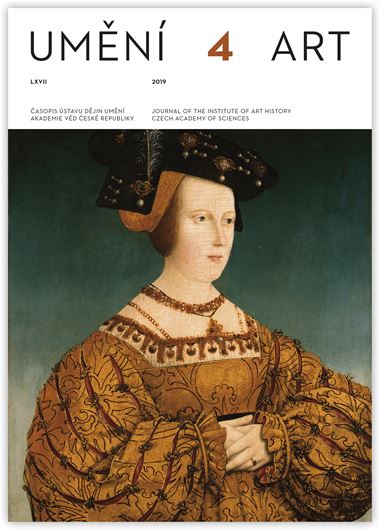Anna Hamrlová
Superiores generales: The Telč Collection of Paintings of Jesuit Generals in the Context of Print Models, Conception and Function
Jesuit houses used to be decorated with cycles of paintings representing a variety of subjects — from saints’ cycles to portrait likenesses of prominent church dignitaries. As in the case of other orders, an inseparable part of the imagery was formed of portraits of the highest representatives of the Jesuit order — generals or also superiores. The painted cycles of Jesuit generals hung above all in larger and more important colleges of the Society of Jesus, only fragments of the one-time comprehensive collections have survived, often totalling only a few pieces from the former number of paintings. They are much more documented in written sources. Deserving note in this context is the cycle of paintings originally from Telč, where the complete corpus of eighteen paintings have been preserved, which depict all the leading representatives of the Jesuit Order from its foundation by Saint Ignatius of Loyola to its formal dissolution in 1773 under General Lorenzo Ricci. Originally, the ensemble was part of the furnishings of the Jesuit College in Telč and currently represents one of the last remainder of what has been left of them. Pictorial cycles were usually produced after print models, in the Telč cycle of generals the paintings were largely modelled on the series of engravings by Arnold van Westerhoult from the book entitled Imagines praepositorum generalium Societatis Iesu (1748, 1759), and partly on older depictions of the order’s prominent figures. The body of works, however, brings up questions that may point to further contexts. This mainly concerns the mirror reversal of some of the cycle’s portraits which indicates that the paintings were once arranged into several groups and that the portraits were painted by various painters as is evident in the preserved works. The finest painting from the cycle, which captures the likeness of Franz Retz, was made by the distinguished Prague painter of German origin, Johann Peter Molitor.
Anna Hamrlová: anna.hamrlova@gmail.com
Full-text in the Digital Library of the Czech Academy of Sciences:
https://kramerius.lib.cas.cz/uuid/uuid:0c356f4b-6367-4c14-b197-620a11d087c5
< back

